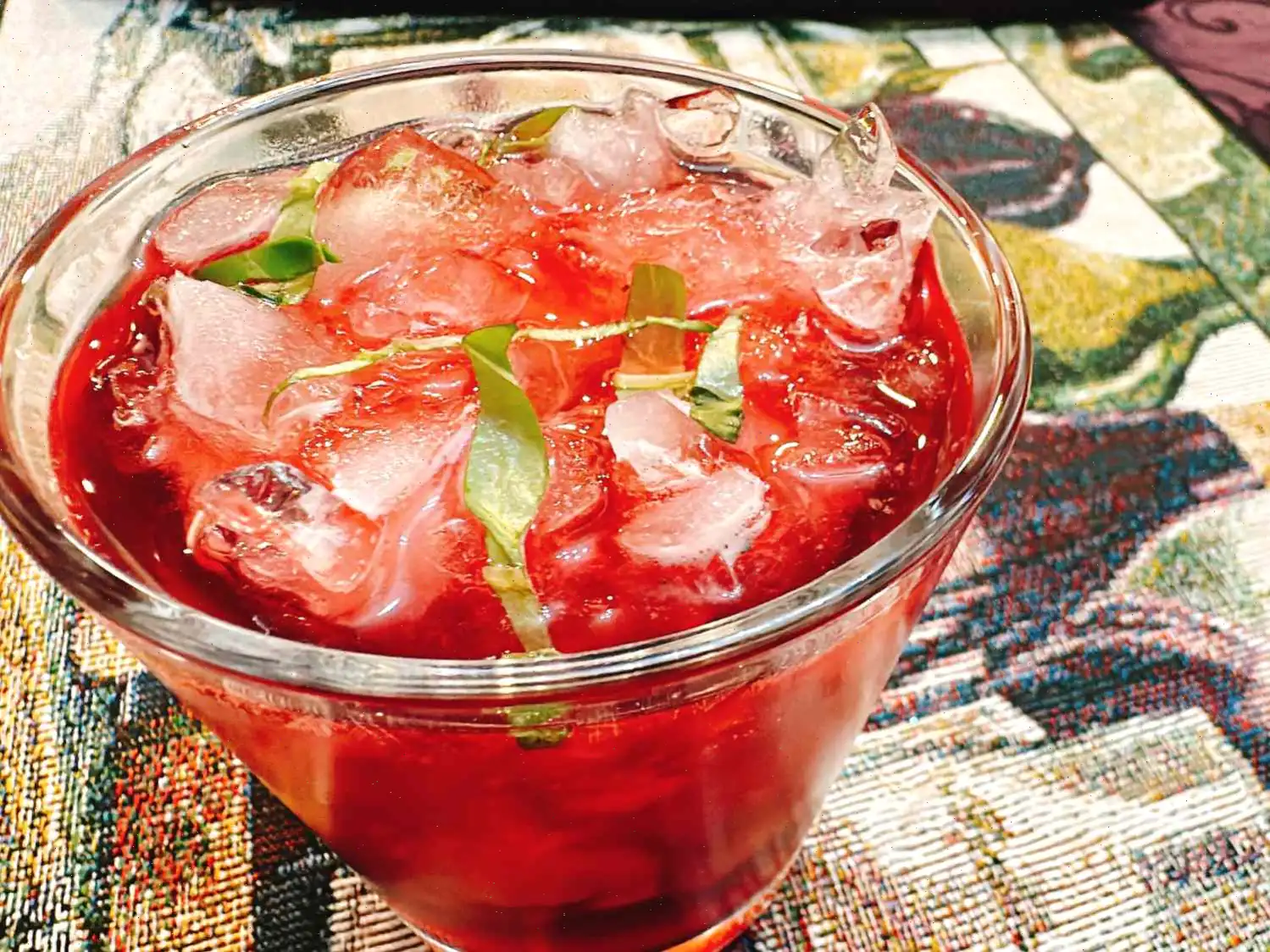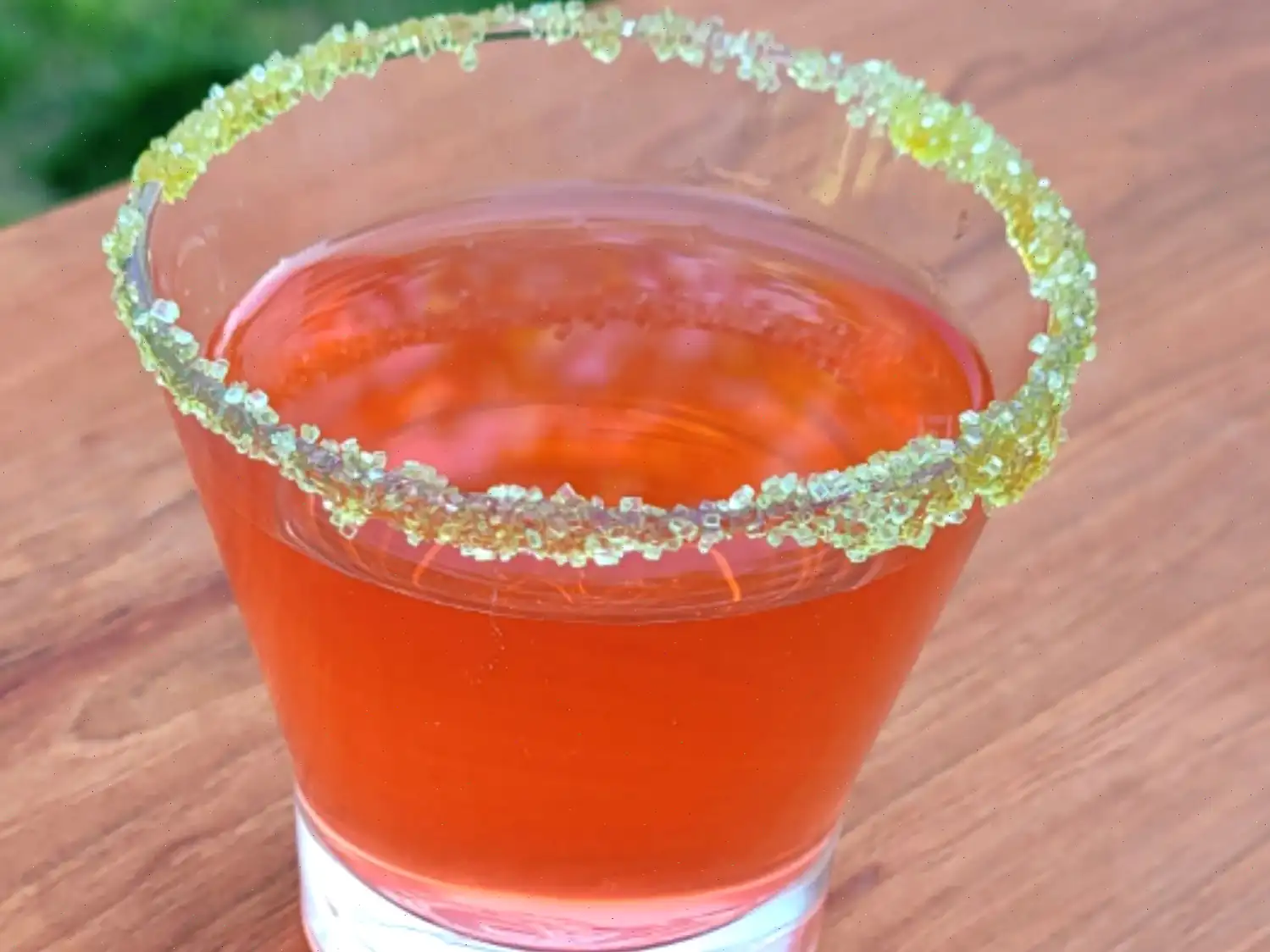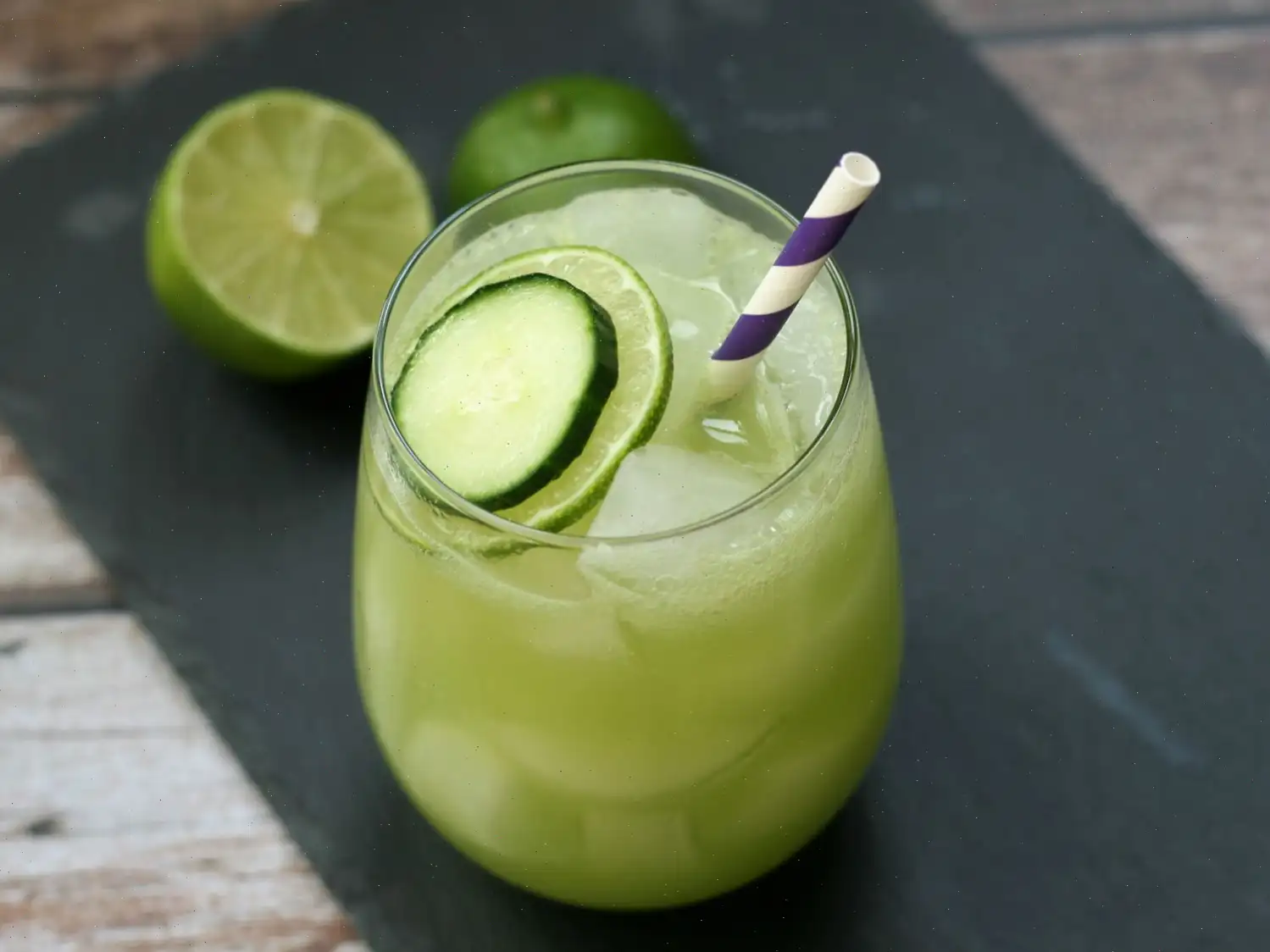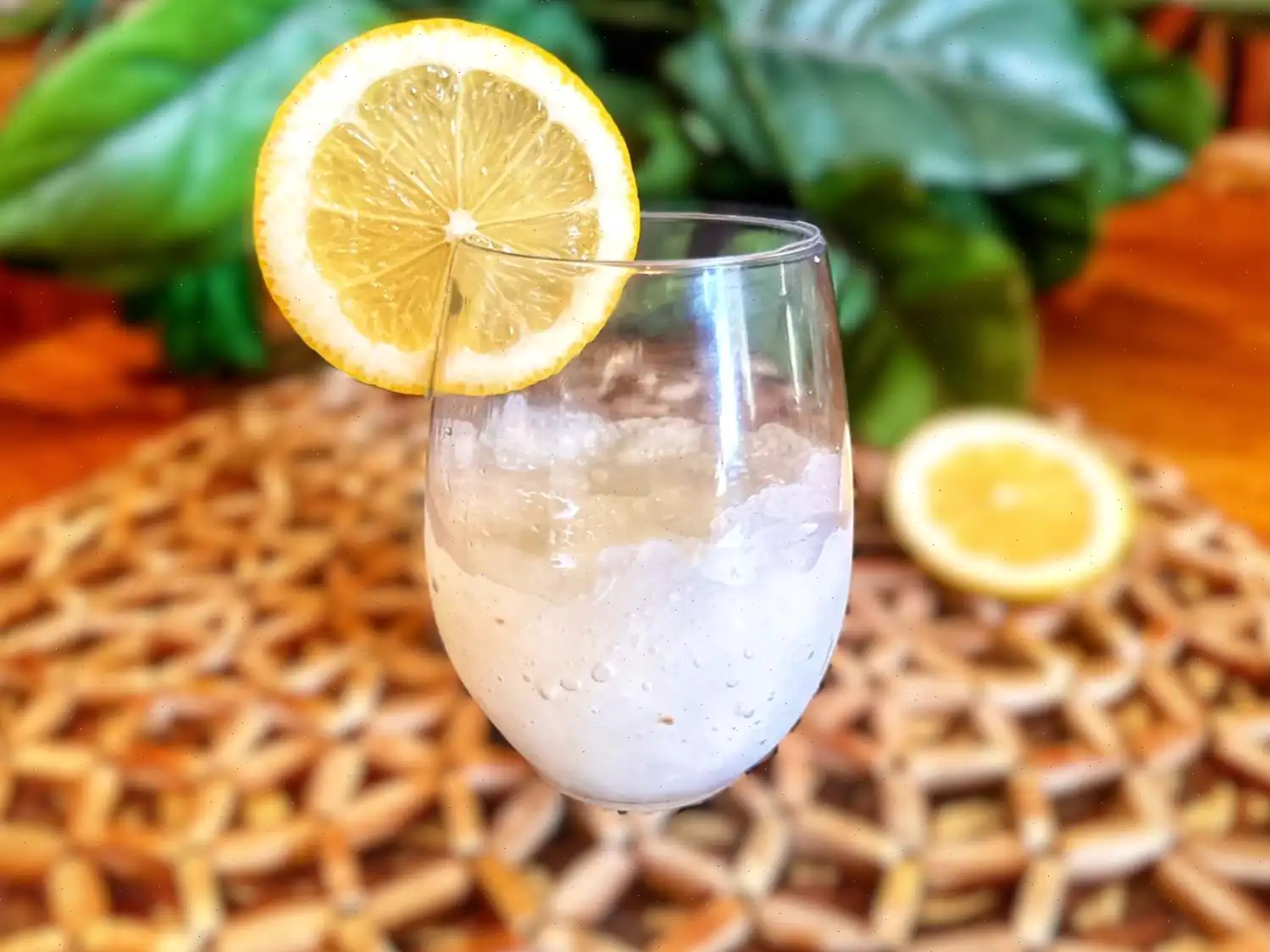
Pomegranate Mocktail Recipe
Ingredients
This recipe was developed at its original yield. Ingredient amounts are automatically adjusted, but cooking times and steps remain unchanged. Note that not all recipes scale perfectly.
- 6 basil leaves, plus more for garnish
- 1 fluid ounce lime juice
- 4 fluid ounces pomegranate juice
- 1 fluid ounce grapefruit lime flavor tepache soda (such as De La Calle Tepache)
Directions
Follow these simple steps to prepare the drink:
- Place the basil leaves and lime juice into a cocktail shaker. Use a cocktail muddler to mash them well.
- Pour in the pomegranate juice, cover the shaker, and shake well to combine the ingredients.
- Strain the mixture into a glass filled with ice.
- Top off the glass with tepache soda and gently stir.
- Garnish with freshly torn basil leaves to add a touch of freshness and color.
Nutrition Facts (per serving)
| Calories | 76 |
| Total Fat | 0g |
| Saturated Fat | 0g |
| Cholesterol | 0mg |
| Sodium | 16mg |
| Total Carbohydrates | 19g |
| Dietary Fiber | 0g |
| Total Sugars | 16g |
| Protein | 0g |
| Vitamin C | 10mg |
| Calcium | 33mg |
| Iron | 0mg |
| Potassium | 314mg |
Additional Notes
Servings per Recipe: 1
* Percent Daily Values are based on a 2,000 calorie diet. Your daily values may be higher or lower depending on your calorie needs.
Important: Nutrient information is not available for all ingredients. Amounts are based on available nutrient data. If you are following a medically restrictive diet, please consult your doctor or registered dietitian before preparing this recipe for personal consumption.
The History and Origins of the Pomegranate Mocktail
The pomegranate has been cultivated for thousands of years, with its origins tracing back to the regions of Persia and the Mediterranean. Revered in ancient cultures for its symbolic meanings of fertility, prosperity, and health, the pomegranate was often used in beverages, medicinal concoctions, and celebratory feasts. The modern pomegranate mocktail is a contemporary adaptation that combines these ancient traditions with modern mixology techniques, offering a refreshing, alcohol-free option for social gatherings. Its vibrant red hue and naturally sweet-tart flavor make it a visually striking and flavorful choice, connecting a long history of cultural significance with todays culinary trends.
Regional Variations and Cultural Influence
While the core ingredientspomegranate juice, lime, and fresh herbsare fairly universal, regional variations add unique touches. In the Middle East, pomegranate syrup or molasses might be added for a deeper, richer flavor, while in Mexico, tepache, a fermented pineapple beverage, is often used as the sparkling component, giving a subtly tangy twist. In the United States and Western countries, the mocktail often emphasizes fresh, local ingredients such as citrus juices and herbs like basil or mint. These regional interpretations showcase how the pomegranate mocktail can be both global in inspiration and locally adapted to suit taste preferences.
Distinguishing It from Similar Beverages
Unlike generic fruit punches or standard sparkling juices, the pomegranate mocktail is carefully balanced in flavor, combining the tartness of lime, the herbal freshness of basil, and the effervescence of tepache soda. Unlike cocktails that rely on alcohol for depth, this mocktail achieves complexity through layering flavors and aromas. Its distinctiveness lies in the interplay between the sweet pomegranate, the zesty lime, and the aromatic basil, making it both refreshing and sophisticated without the need for spirits.
Typical Serving Occasions
Pomegranate mocktails are commonly served at brunches, garden parties, and festive gatherings where alcohol-free options are desired. They are also popular at wellness-focused events due to the high antioxidant content of pomegranate juice. Often served in tall glasses with ice and garnished with fresh basil or citrus slices, the drink is visually appealing, making it suitable for celebrations, casual get-togethers, and even formal dinners where a non-alcoholic alternative is preferred.
Interesting Facts and Fun Trivia
- The pomegranate is rich in antioxidants, vitamin C, and potassium, which contribute to its health benefits and popularity in mocktails.
- The use of basil in beverages dates back centuries, with the herb often added for its aromatic and slightly sweet notes that complement fruity flavors.
- Tepache soda, a traditional Mexican drink made from fermented pineapple, adds a subtle tangy effervescence that differentiates this mocktail from typical carbonated fruit drinks.
- In some cultures, pomegranates symbolize life and abundance, making this mocktail a symbolic choice for celebratory events.
- The preparation of a pomegranate mocktail encourages creative mixology techniques such as muddling herbs and layering flavors, making it an engaging drink to prepare at home.
Overall, the pomegranate mocktail is more than just a beverageits a bridge between cultural heritage, health-conscious choices, and contemporary taste, offering a delightful experience for both the eyes and palate.








